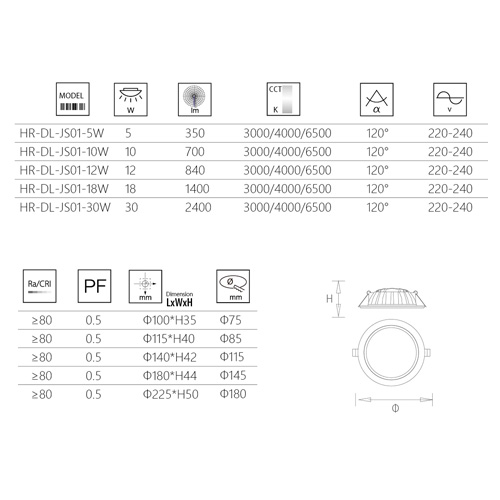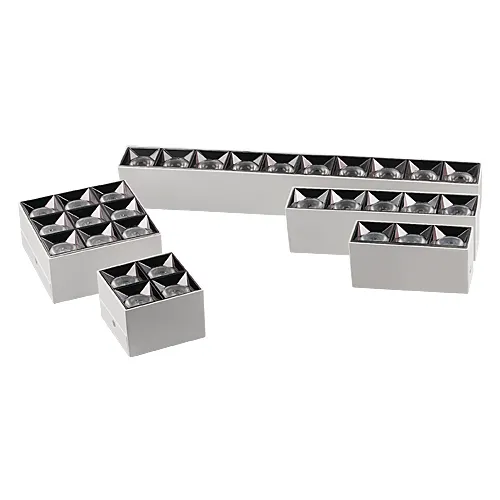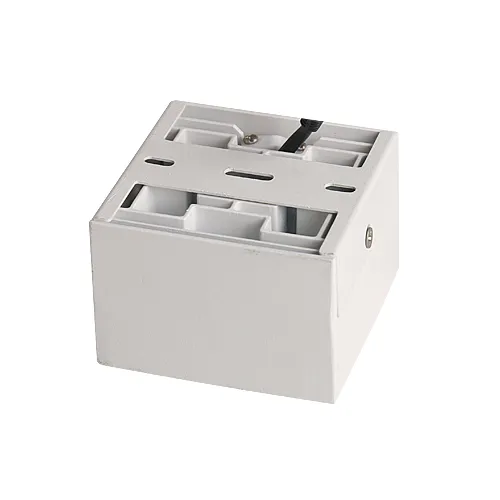What does LM mean in LED linear lighting?
In the field of LED linear lighting, technical parameters are crucial for consumers and industry practitioners. In order to help users better understand these technical parameters and make accurate choices, some abbreviations and terms are often mentioned in the industry, among which "LM" is a common and important abbreviation. For consumers who are not familiar with the lighting industry, LM may be just a simple combination of letters, but in fact, it plays an important role in the specifications of LED linear lighting.
In order to help everyone better understand the meaning of LM in LED linear lighting and its related concepts, this article will comprehensively analyze the definition, function, measurement standard of LM and how to correctly interpret LM when choosing LED linear lighting, so as to help consumers make more informed lighting choices.

What is LM?
Before discussing the meaning of LM in LED linear lighting, we first need to understand its definition in lighting technology. LM is the abbreviation of "Lumen", which is translated into "lumen" in Chinese. Lumen is the international standard unit for measuring luminous flux (that is, the total amount of light emitted by a light source), representing the total amount of visible light emitted by a light source per unit time.
In simple terms, the higher the lumen value, the more light the light source emits and the brighter the lighting effect. In LED linear lighting, LM is usually used to represent the light output of an LED strip or lamp. For LED lamps of the same power (watt), the larger the lumen value, the higher the brightness.

What is the role of LM (lumen) in LED linear lighting?
LED linear lighting is a common lighting design method, widely used in home, commercial, industrial and other places. Its main feature is to install multiple LED lamp beads in a certain arrangement on a long light strip or light strip to produce a uniform linear light source. As a key parameter for measuring the brightness of LED linear lighting, LM has the following important functions:
1. An intuitive indicator of brightness
LM (lumen) is a very direct and easy-to-understand indicator for measuring the brightness of LED linear lighting. By looking at the LM value of a lamp or light strip, users can clearly know how much brightness the LED linear lighting product can provide at the same power. Generally speaking, a higher LM value means a brighter lighting effect.
2. Comparing the light effects of different LED lamps
When purchasing LED linear lighting, consumers can compare the brightness of products of different brands and models by LM value. This is particularly important for lighting design, because in some special application scenarios, too bright or too dark light sources will affect the user experience. By comparing lumen values, users can choose lighting products that suit their needs.
3. Evaluate light source efficiency
LM values can also help evaluate the efficiency of light sources, that is, the amount of light that can be output per unit power consumption. In the lighting industry, efficiency is usually expressed in "lumens per watt" (lm/W). A high lumen value LED linear lighting usually also means higher light efficiency, which can provide higher brightness while consuming the same power, which is one of the important reasons why LED linear lighting has become an energy-saving and environmentally friendly lighting solution.
4. Help lighting designers with layout and selection
In the fields of commercial lighting, display lighting, etc., lighting designers often use LM values to layout and select lamps. By calculating the required luminous flux and selecting LED lamps with appropriate lumen values, designers can accurately design lighting effects that meet their needs.

What is the relationship between LM and other lighting parameters?
When purchasing and using LED linear lighting, LM values are usually not used alone, but are considered together with other lighting parameters to ensure the optimization of lighting effects and user experience. Understanding the relationship between LM and other related parameters is very important for consumers and industry professionals.
1. The relationship between lumens and wattage (luminous efficacy)
In the field of LED lighting, power (in watts W) and lumen value (LM) are usually proportional. That is, with other conditions unchanged, the higher the power of LED linear lighting, the greater the luminous flux it emits. But it is important to note that the lumen value depends not only on the power, but also on the luminous efficacy (lm/W) of the LED light source.
Luminous efficacy (lm/W) is a key indicator for evaluating the performance of LED lamps, indicating the amount of light produced for each watt of electricity consumed. High-luminous efficacy LED lamps can provide more lumen output at the same power. Therefore, choosing high-luminous efficacy LED linear lighting can achieve brighter lighting effects while keeping the power unchanged.
For example, a 10-watt LED lamp may have a lumen output between 800 lumens and 1200 lumens, and the specific value will depend on the luminous efficacy of the LED. Some high-efficiency LED linear lighting may provide higher lumen values, while low-efficiency lamps have lower lumen values.
2. The relationship between lumen and color temperature
Color temperature (measured in Kelvin K) and lumen values are not directly related, but they will affect the perceived brightness of light together. Light with a higher color temperature (such as 5000K cool white light) usually looks brighter than light with a lower color temperature (such as 2700K warm white light) because cool light gives people a brighter and clearer feeling.
When choosing LED linear lighting, consumers need to consider both lumen and color temperature and choose the lighting effect that best suits their needs. For example, in some application scenarios (such as kitchens and offices), cool white (above 5000K) light sources may be required to help improve visual clarity and work efficiency, while in environments that require a relaxing atmosphere, such as bedrooms or dining rooms, warm white (below 3000K) light sources can be selected to create a warm and comfortable space.
3. The relationship between lumen and illumination
Lux is a standard unit for measuring the intensity of light per unit area, and it has a direct relationship with lumen. The calculation formula for illumination is: illumination (lux) = luminous flux (lm) / illuminated area .
In other words, the larger the number of lumens, the higher the illumination on the same area. For the same space, if a higher illumination is required (such as offices, shops, etc.), you need to choose LED linear lighting with a higher lumen value. In places where lower illumination is required (such as bedrooms, restaurants, etc.), LED lamps with lower lumen values may be able to meet the needs.

How to choose the right LED linear lighting lamp?
When choosing LED linear lighting lamps, in addition to paying attention to the LM value, you also need to consider the following factors:
1. Space requirements and functional requirements
Different application scenarios have different lighting requirements. For example, commercial display lighting may require higher brightness and higher color rendering index (CRI) to highlight the display product; while home lighting pays more attention to a comfortable atmosphere and soft light. Choosing the right lumen value according to the size of the space and functional requirements can avoid over-lighting or under-lighting.
2. Light efficiency and energy saving
High light efficiency LED linear lighting can not only provide sufficient brightness, but also save energy. Consumers should consider the relationship between lumen and power when choosing, and choose products with higher light efficiency, so that they can provide the required brightness while reducing energy consumption.
3. Heat dissipation performance
The heat dissipation performance of LED linear lighting directly affects its service life and stability. A better heat dissipation design can avoid overheating of the lamp and prevent damage due to excessive temperature. Therefore, choosing LED linear lighting with a good heat dissipation system can better ensure the long-term stability of the product.
4. Installation environment and lamp size
Choose the appropriate LED linear lighting size and lumen output according to the installation environment. If it is a commercial environment that requires long-term work and high brightness, you need to choose a lamp with a higher lumen value; if it is a home environment or decorative lighting, you can choose a lamp with a moderate lumen value to ensure that there is no excessive visual stimulation.
